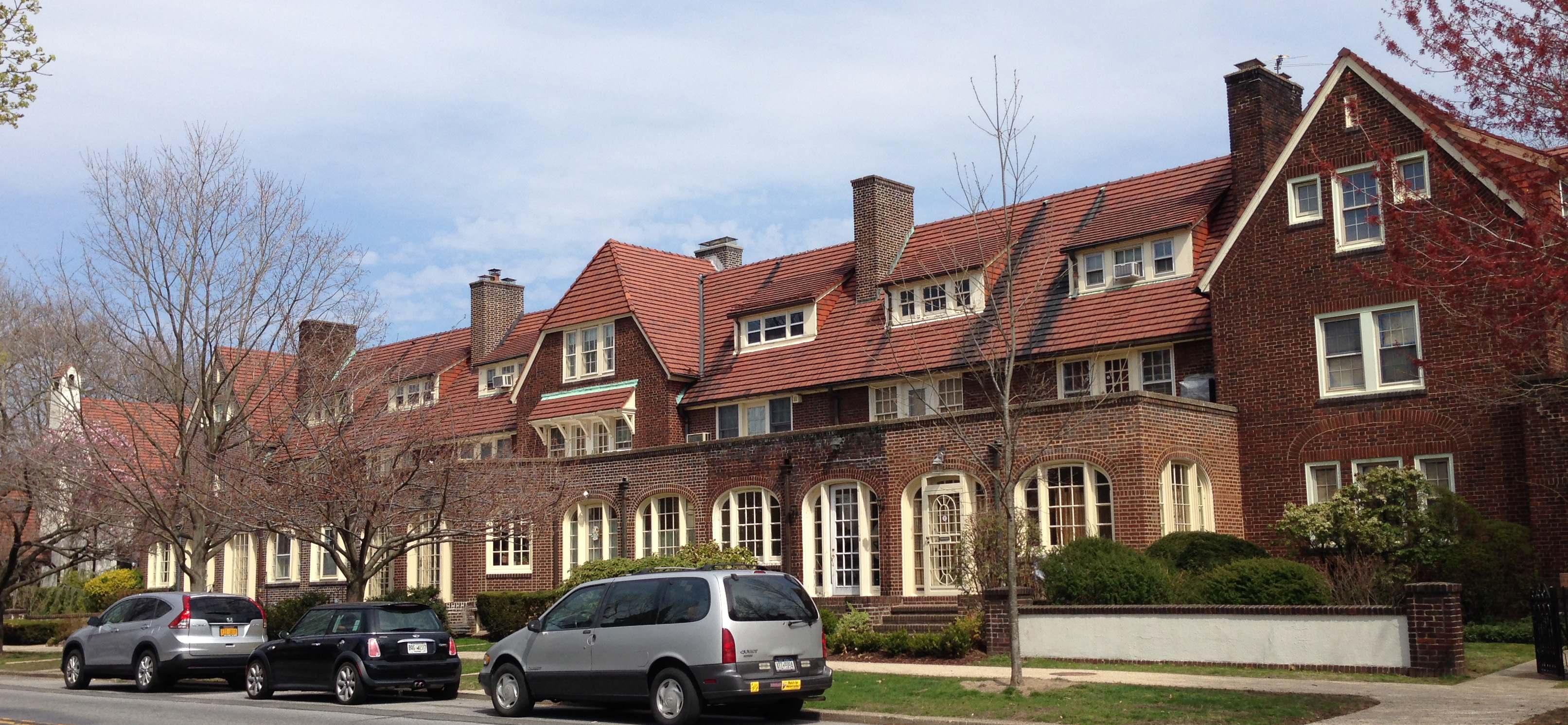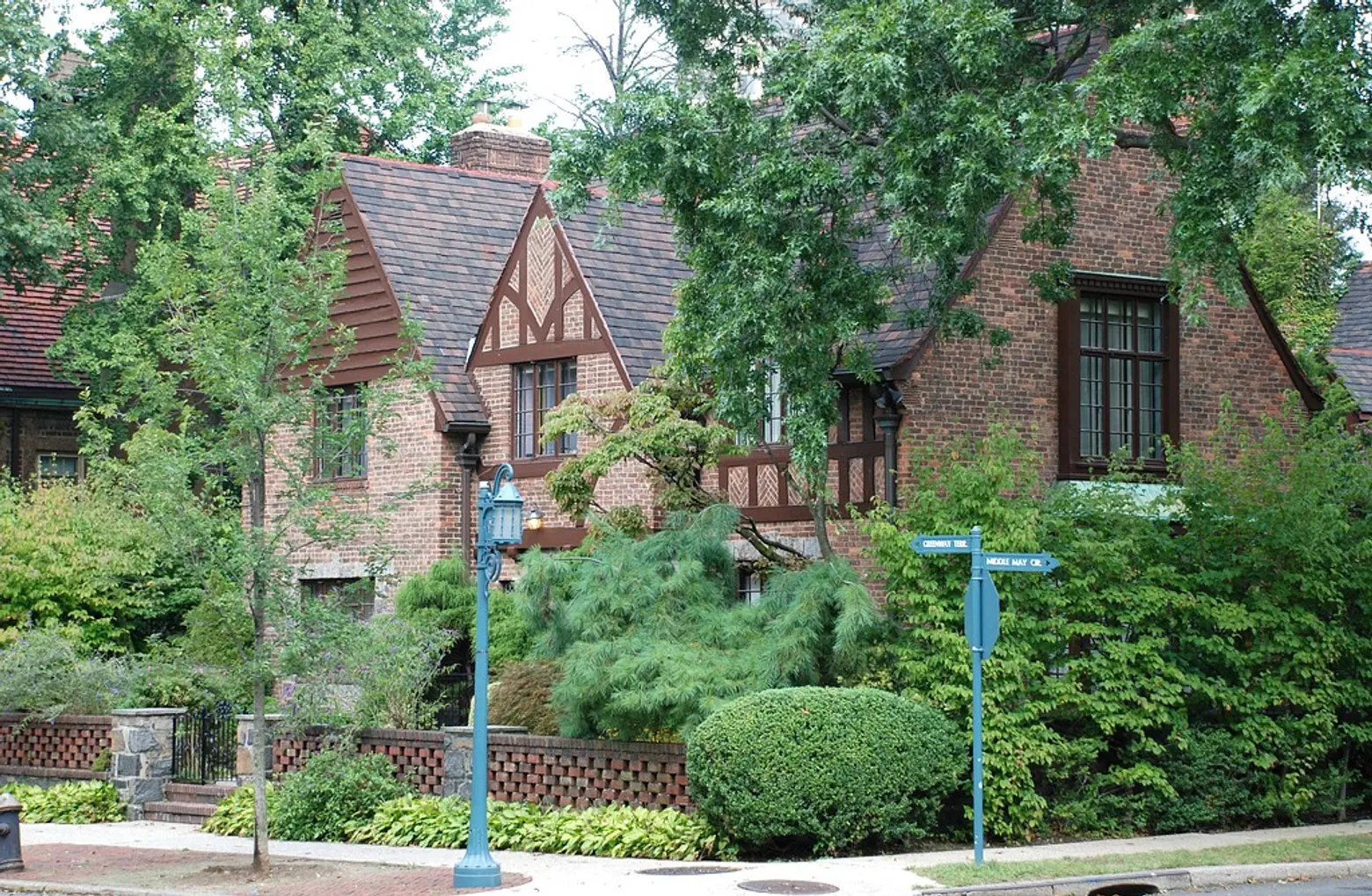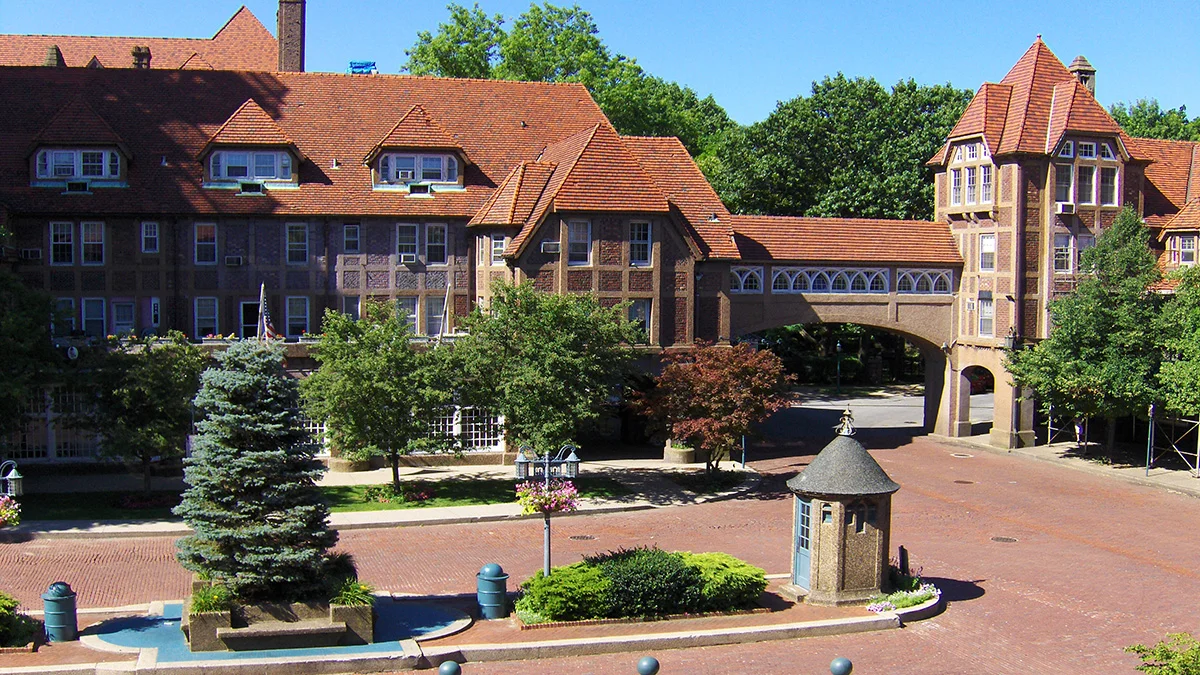Imagine living in a place that feels like a serene oasis, yet is just a stone’s throw away from the bustling energy of New York City. Welcome to Forest Hills Gardens Corporation, a community where picturesque landscapes meet historic charm.
Here, you can stroll through tree-lined streets and admire beautifully crafted homes that whisper stories of the past. But this isn’t just another neighborhood; it’s a unique enclave that invites you to experience a lifestyle that’s both tranquil and vibrant.
As you dive deeper into this article, you’ll discover what makes Forest Hills Gardens Corporation a hidden gem. From its rich history to the community spirit that binds its residents, there’s so much to explore. Curious to know more about what this enchanting place has to offer you? Keep reading, and let the allure of Forest Hills Gardens unfold before your eyes.
JUMP TO TOPIC
Historical Origins
Forest Hills Gardens Corporation has a rich historical background. It is renowned for its unique architecture and community planning. This neighborhood in Queens, New York, is a model of urban design. Its origins are deeply rooted in early 20th-century planning concepts.
Historical Foundations
Forest Hills Gardens was established in 1909. It was one of the first garden communities in the United States. The planners aimed to create a beautiful and functional living space. They wanted to blend nature with modern living.
Influential Figures
Architect Grosvenor Atterbury played a key role in its design. His vision shaped the community’s unique architectural style. Landscape architect Frederick Law Olmsted Jr. also contributed. He designed the lush, green spaces residents enjoy today.
Architectural Style
The neighborhood showcases Tudor and Georgian architectural styles. The buildings are crafted with meticulous detail. Red brick and slate roofs are common features. These elements give the area its distinctive charm.
Forest Hills Gardens was planned with a focus on community. The streets are curved, creating a cozy feel. Public spaces are designed for social interaction. This encourages a sense of belonging among residents.

Credit: 6tocelebrate.org
Architectural Design
Forest Hills Gardens Corporation is a neighborhood that captivates with its architectural elegance. Its design is not just a visual treat but a journey through diverse architectural influences. Walking through its streets, you feel like you’re flipping through pages of an architectural history book. Each structure tells a story, rooted deeply in tradition and innovation.
Influences And Styles
The architectural design of Forest Hills Gardens is influenced by English Garden City principles. These principles emphasize harmony with nature, integrated community spaces, and architectural beauty. You can see the charming blend of Tudor and Colonial Revival styles throughout the neighborhood.
Imagine walking past a house with steeply pitched roofs and decorative half-timbering. These features are classic Tudor elements that transport you to an English countryside. The Colonial Revival style, on the other hand, offers a more stately appearance with its symmetrical facades and columned entrances.
How do these styles affect the community atmosphere? They create a unique blend of serenity and grandeur, making Forest Hills Gardens a desirable place to live. Each building complements the next, forming a cohesive and inviting neighborhood landscape.
Notable Architects
The architectural brilliance of Forest Hills Gardens is the brainchild of renowned architects like Grosvenor Atterbury. He played a pivotal role in designing the original plans for the community. His innovative use of prefabricated concrete panels was groundbreaking at the time.
Atterbury’s designs weren’t just about aesthetics; they emphasized functionality and efficiency. Imagine living in a home that stands the test of time and weather, thanks to his pioneering construction methods. His work set a precedent for future developments in architectural design.
Another key figure is Frederick Law Olmsted Jr., who focused on landscaping and community planning. His vision ensured that the architectural designs integrated seamlessly with green spaces. Do you ever wonder how parks and homes can coexist so beautifully? Olmsted’s designs are the answer, creating a perfect blend of nature and architecture.
As you explore Forest Hills Gardens, consider the legacy of these architects. Their work has not only shaped a neighborhood but also influenced architectural designs worldwide. How might their vision inspire your own ideas about community and design?
Community Planning
Community planning in Forest Hills Gardens Corporation reflects meticulous attention to detail. Thoughtful design creates a harmonious living environment. The community balances modern amenities with historical charm.
Layout And Infrastructure
The layout of Forest Hills Gardens emphasizes accessibility and aesthetics. Streets are designed in a grid pattern for easy navigation. Infrastructure supports both pedestrian and vehicular traffic. Homes blend seamlessly with the natural surroundings. Architectural styles are diverse yet cohesive. Public facilities are strategically located for convenience.
Green Spaces And Parks
Green spaces are integral to Forest Hills Gardens. Parks offer residents a tranquil retreat. Trees and shrubs line the streets, enhancing beauty. Open areas provide space for recreation and relaxation. Landscaped gardens feature native plant species. Walking paths encourage outdoor activities and community interaction.

Credit: www.6sqft.com
Cultural Significance
Forest Hills Gardens Corporation holds great cultural significance with its rich history and architectural beauty. The community showcases unique design elements and maintains a strong sense of identity. It reflects a blend of tradition and innovation, fostering a vibrant neighborhood atmosphere.
Forest Hills Gardens Corporation holds a unique place in the tapestry of urban development and cultural heritage in the United States. This planned community, nestled in Queens, New York, is more than just a residential area. It stands as a testament to early 20th-century urban planning ideals, blending architecture and community design in ways that continue to influence modern urban landscapes.Impact On Urban Development
Forest Hills Gardens Corporation was one of the first planned communities in the country. Its design has influenced urban planners for over a century. It presented a model for integrating residential areas with natural landscapes, paving the way for garden cities worldwide. The layout of Forest Hills Gardens prioritized pedestrian-friendly streets and communal spaces. This design encouraged social interaction and promoted a sense of community. Have you ever walked through a neighborhood and felt its warmth and welcoming vibe? That’s the impact of thoughtful urban planning. Today, city planners still look to Forest Hills Gardens for inspiration. The community demonstrates how blending natural elements with urban living can enhance quality of life. Can you imagine living in a city that feels more like a park than a concrete jungle?Cultural Heritage
Forest Hills Gardens is not just about architecture; it’s about preserving cultural heritage. The community’s unique character is reflected in its Tudor and Georgian-style homes. These architectural styles tell a story of a time when elegance and simplicity went hand in hand. Residents of Forest Hills Gardens often speak of the pride they feel living amidst such history. This pride isn’t just about the homes; it’s about being part of a living, breathing piece of history. How often do you get to live in a place that feels like a page out of a history book? The cultural significance of Forest Hills Gardens extends beyond its borders. It has hosted numerous cultural events, fostering a rich tapestry of arts and traditions. This vibrant cultural scene keeps the spirit of the community alive and thriving. What stories will you contribute to a community so rich in culture and history? As you explore the cultural significance of Forest Hills Gardens, think about how the past and present blend to create a community that values both innovation and tradition. Wouldn’t it be exciting to see how your own neighborhood can draw inspiration from such a heritage-rich place?Preservation Efforts
Forest Hills Gardens Corporation takes pride in its preservation efforts. This community values its historical charm. It ensures that its unique architectural heritage is maintained. Let’s explore how this commitment unfolds.
Restoration Projects
Restoration projects are key to preserving Forest Hills Gardens. They focus on maintaining the area’s architectural beauty. Skilled craftsmen work on restoring century-old homes. They use traditional methods and materials. This ensures the original design remains intact. Efforts include repairing roofs, restoring facades, and maintaining landscapes.
Community Involvement
The community plays a vital role in preservation. Residents participate in planning and decision-making. They contribute ideas and feedback on various projects. Local volunteers often assist with maintenance tasks. Their involvement fosters a sense of ownership and pride. Community events raise awareness about historical conservation. They educate residents on the importance of preservation. These initiatives strengthen the bond among community members.

Credit: www.flickr.com
Modern Challenges
Forest Hills Gardens Corporation faces modern challenges in maintaining its historic charm while adapting to urban demands. Balancing development with community needs requires strategic planning and innovative solutions. This unique neighborhood strives to preserve its legacy amidst evolving city landscapes.
Modern living brings unique challenges to Forest Hills Gardens Corporation, a community known for its blend of historic charm and contemporary living. As you navigate the evolving landscape, you might wonder how this picturesque neighborhood manages to maintain its allure while adapting to today’s demands. With changing environmental standards and the digital age’s influence, the community faces the task of preserving its cherished heritage while embracing the future.Balancing Tradition And Innovation
Forest Hills Gardens is a place where history is palpable. Walking through its streets, you can sense the past in the architecture and layout. Yet, as a resident or visitor, you’ve likely noticed the subtle changes that reflect modern needs. The challenge lies in maintaining the area’s historical integrity while integrating new technologies. For example, the introduction of energy-efficient lighting must blend seamlessly with the classic aesthetic. This delicate balancing act requires careful planning and community involvement. Have you ever thought about how your own home could benefit from such a balance? Perhaps there’s a way to introduce smart technology without compromising style. Forest Hills Gardens is a testament to the idea that progress and tradition can coexist harmoniously.Environmental Concerns
The green spaces in Forest Hills Gardens are more than just a visual delight; they’re vital to the community’s health. Yet, like many places, environmental concerns are growing. Residents often face decisions about how best to maintain these areas sustainably. Consider the impact of climate change on your neighborhood. In Forest Hills Gardens, initiatives like rainwater harvesting and native plant gardening are gaining traction. These efforts are not just about preserving beauty but ensuring resilience in the face of environmental shifts. What steps can you take to contribute to a greener community? Simple actions, like supporting local eco-friendly initiatives, can make a significant difference. Forest Hills Gardens’ approach shows that small changes lead to meaningful improvements. As you reflect on these modern challenges, think about how you can apply similar strategies in your own life and community. Balancing the old with the new and caring for the environment are not just challenges—they’re opportunities for growth and improvement.Future Prospects
Forest Hills Gardens Corporation envisions preserving its historic charm while embracing sustainable urban planning. Future endeavors focus on enhancing community engagement and green spaces, maintaining the neighborhood’s unique character.
Forest Hills Gardens Corporation is a community with a rich history, and its future prospects are equally promising. As the neighborhood looks ahead, it is focused on enhancing its sustainability and fostering a stronger community vision. Whether you’re a resident or considering moving here, these initiatives are shaping the future of Forest Hills Gardens in exciting ways. Let’s dive into what the future holds and how it might affect you.Sustainability Initiatives
Forest Hills Gardens Corporation is making strides toward a greener future. The community is implementing eco-friendly practices that aim to reduce its carbon footprint. Imagine strolling through tree-lined streets knowing each step supports a healthier planet. Residents have been proactive in adopting solar panels and utilizing energy-efficient appliances. These changes not only help the environment but also lower utility bills. What steps can you take to contribute to this green movement? The corporation is also exploring waste reduction programs. These initiatives encourage recycling and composting, making it easy for everyone to participate. Have you considered how small changes in your daily routine can make a big difference?Community Vision
The vision for Forest Hills Gardens is clear and community-driven. Residents are encouraged to take part in shaping the neighborhood’s future. This collaborative spirit ensures that everyone’s voice is heard and valued. Community events and workshops are regularly organized to discuss future plans. These gatherings are not just about planning; they are about building relationships. How might you benefit from getting more involved? The corporation emphasizes preserving the historical charm while integrating modern amenities. It’s about finding that perfect balance between past and future. How do you see your role in maintaining this delicate equilibrium? As you look ahead, consider how these initiatives align with your values. Forest Hills Gardens is not just a place to live; it’s a community to thrive in. What part will you play in shaping its future?Frequently Asked Questions
What Is Forest Hills Gardens Corporation?
Forest Hills Gardens Corporation is a private community association. It manages and maintains the historic neighborhood of Forest Hills Gardens in Queens, New York. Founded in 1909, it oversees community services, architectural guidelines, and landscaping to preserve the area’s unique character.
How Does Forest Hills Gardens Corporation Operate?
The corporation operates through a board of directors. It sets policies and ensures the community’s upkeep. It manages communal areas, enforces architectural guidelines, and organizes community events. Residents pay annual fees to support these activities and maintain the neighborhood’s quality and charm.
What Architectural Style Is Forest Hills Gardens Known For?
Forest Hills Gardens is renowned for its Tudor-style architecture. Influenced by English garden city planning, it features picturesque homes, winding streets, and lush greenery. This cohesive architectural style creates a harmonious and aesthetically pleasing neighborhood that attracts both residents and visitors.
Is Forest Hills Gardens A Public Or Private Community?
Forest Hills Gardens is a private residential community. While it welcomes visitors, its roads and parks are privately owned. The Forest Hills Gardens Corporation manages these areas, ensuring they remain beautiful and accessible to residents while maintaining privacy and exclusivity.
Conclusion
Forest Hills Gardens Corporation offers a unique blend of history and charm. This community provides a peaceful, welcoming environment. Its beautiful gardens and architecture attract many visitors. Residents enjoy a friendly neighborhood with a strong sense of community. Families find it a great place to live and grow.
The area’s rich heritage and vibrant lifestyle appeal to many. A visit to Forest Hills Gardens promises a delightful experience. Discover the harmony of nature and architecture here. Embrace the tranquility and beauty of this special place. A true gem in urban living.

